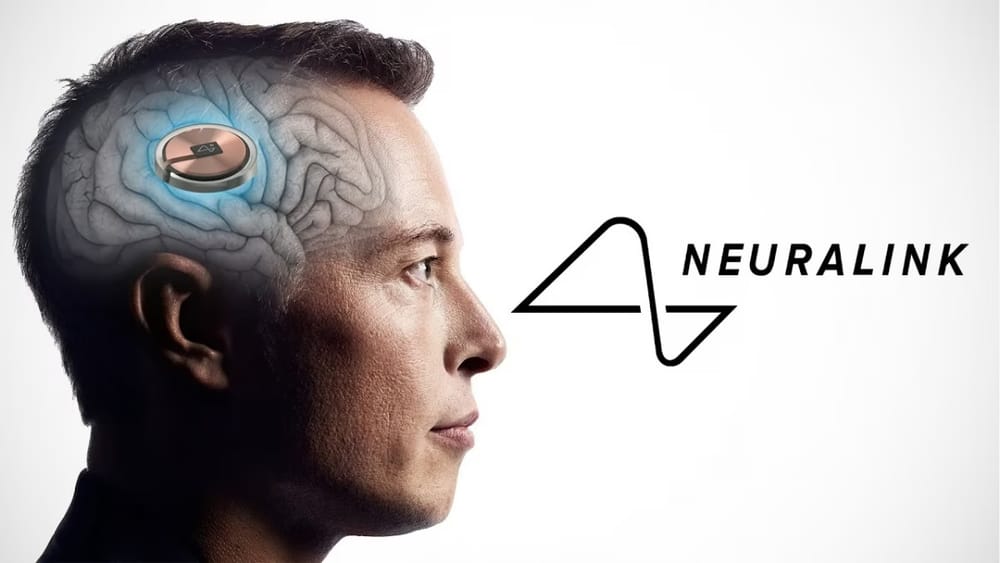What is Neuralink ?
In the realm of science fiction, the idea of merging the human brain with machines has captivated imaginations for decades. Today, that vision is edging closer to reality, thanks to Neuralink, a company founded by Elon Musk in 2016. Neuralink aims to develop ultra-high bandwidth brain-machine interfaces (BMIs) to connect humans and computers. This groundbreaking technology promises to revolutionize medicine, enhance human capabilities, and transform our interaction with technology.
The Vision Behind Neuralink
Elon Musk's motivation for founding Neuralink is driven by his concerns about the future of artificial intelligence (AI). He envisions a symbiotic relationship between humans and AI, where brain-machine interfaces could mitigate the risks posed by AI's rapid advancements. By enabling direct communication between the brain and computers, Neuralink aims to keep humanity competitive in an increasingly AI-dominated world.

How Neuralink Works
At its core, Neuralink's technology involves implanting tiny electrodes, referred to as "threads," into the brain. These threads, thinner than a human hair, are designed to read and transmit neural signals. A small device, called the "Link," is then embedded in the skull and connected to these electrodes. The Link wirelessly communicates with external devices, allowing for seamless data transfer between the brain and machines.
Neuralink's approach leverages advanced robotics to ensure precise and minimally invasive insertion of the electrodes. The goal is to develop a fully automated process that minimizes risk and maximizes efficiency, making the procedure as routine as modern-day LASIK eye surgery.

Medical Applications
The potential medical applications of Neuralink's technology are vast and transformative. Some of the most promising areas include:
1. Treating Neurological Disorders: Neuralink aims to address a range of neurological conditions, such as Parkinson's disease, epilepsy, and spinal cord injuries. By directly stimulating specific areas of the brain, the technology could restore motor functions, reduce symptoms, and improve the quality of life for patients.
2. Restoring Sensory Functions: For individuals with sensory impairments, Neuralink holds the potential to restore lost functions. This includes enabling the blind to perceive visual information and helping the deaf experience sound through direct neural stimulation.
3. Mental Health: Neuralink could provide new treatments for mental health disorders like depression, anxiety, and PTSD. By modulating neural activity, it may be possible to alleviate symptoms and offer long-term relief for patients.

Enhancing Human Capabilities
Beyond medical applications, Neuralink envisions a future where brain-machine interfaces enhance human capabilities and open new possibilities:
1. Cognitive Enhancement: With Neuralink, humans could potentially augment their cognitive abilities, such as memory, learning speed, and problem-solving skills. This could lead to unprecedented advancements in education, research, and personal development.
2. Communication: Brain-machine interfaces could revolutionize communication by enabling direct thought transmission. This would eliminate language barriers, enhance collaboration, and create new forms of social interaction.
3. Human-Machine Integration: Neuralink could enable seamless integration with various devices and systems, allowing humans to control computers, smartphones, and other technologies directly with their thoughts. This could lead to more intuitive and efficient interactions with technology.
Ethical and Societal Considerations
While the potential benefits of Neuralink are immense, the technology also raises important ethical and societal questions. Issues related to privacy, security, and the potential for misuse must be carefully addressed. The concept of enhancing human capabilities also prompts debates about fairness, accessibility, and the definition of what it means to be human.
Neuralink has committed to transparency and collaboration with regulatory bodies to ensure the technology is developed responsibly. The company emphasizes the importance of informed consent, rigorous testing, and adherence to ethical standards throughout the research and development process.
Looking Ahead
As Neuralink continues to advance its technology, the future of brain-machine interfaces holds exciting possibilities. The company is currently conducting animal testing and plans to begin human trials in the near future. These trials will provide valuable insights into the safety, efficacy, and potential applications of Neuralink's devices.
Elon Musk's vision for Neuralink is ambitious and far-reaching, aiming to create a world where humans and machines coexist in harmony. As the technology evolves, it has the potential to redefine healthcare, enhance human capabilities, and reshape our relationship with technology.
Conclusion
Neuralink represents a bold step toward a future where the boundaries between humans and machines blur. By developing cutting-edge brain-machine interfaces, Neuralink aims to address neurological disorders, enhance human abilities, and create a new paradigm of human-computer interaction. While challenges and ethical considerations remain, the potential benefits of this technology are profound, promising to transform lives and shape the future of humanity.




